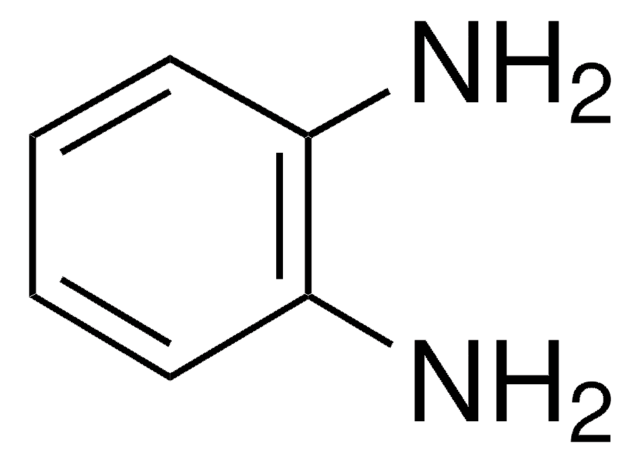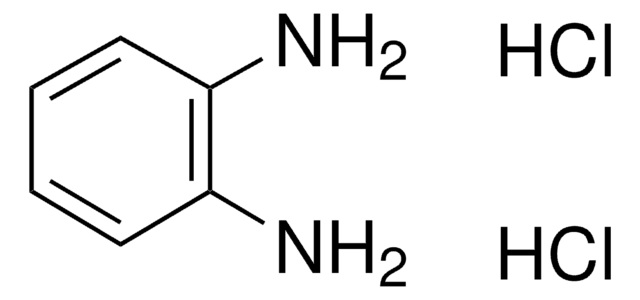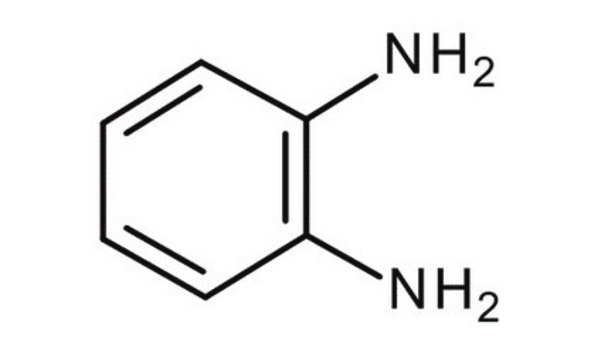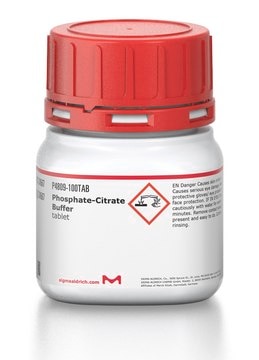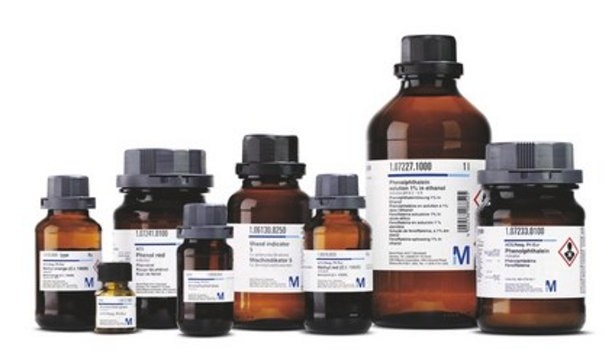P5412
o-Phenylenediamine
peroxidase substrate, chromogenic, tablet
Synonym(s):
1,2-Diaminobenzene, 1,2-Phenylenediamine, OPD
About This Item
Recommended Products
product name
o-Phenylenediamine, tablet, 20 mg substrate per tablet
vapor density
3.7 (vs air)
Quality Level
vapor pressure
0.01 mmHg ( 25 °C)
form
tablet
bp
256-258 °C
mp
100-102 °C
fluorescence
λex 337 nm; λem 417 nm (after derivatization)
storage temp.
2-8°C
SMILES string
Nc1ccccc1N
InChI
1S/C6H8N2/c7-5-3-1-2-4-6(5)8/h1-4H,7-8H2
InChI key
GEYOCULIXLDCMW-UHFFFAOYSA-N
Looking for similar products? Visit Product Comparison Guide
Related Categories
Application
Biochem/physiol Actions
Reconstitution
signalword
Danger
Hazard Classifications
Acute Tox. 3 Oral - Aquatic Acute 1 - Aquatic Chronic 1 - Carc. 2 - Eye Irrit. 2 - Muta. 2 - Skin Sens. 1
wgk_germany
WGK 3
flash_point_f
closed cup
flash_point_c
closed cup
Certificates of Analysis (COA)
Search for Certificates of Analysis (COA) by entering the products Lot/Batch Number. Lot and Batch Numbers can be found on a product’s label following the words ‘Lot’ or ‘Batch’.
Already Own This Product?
Find documentation for the products that you have recently purchased in the Document Library.
Customers Also Viewed
Articles
Nitroblue Tetrazolium (NBT) is used with the alkaline phosphatase substrate 5-Bromo- 4-Chloro-3-Indolyl Phosphate (BCIP) in western blotting and immunohistological staining procedures. These substrate systems produce an insoluble NBT diformazan end product that is blue to purple in color and can be observed visually.
Our team of scientists has experience in all areas of research including Life Science, Material Science, Chemical Synthesis, Chromatography, Analytical and many others.
Contact Technical Service